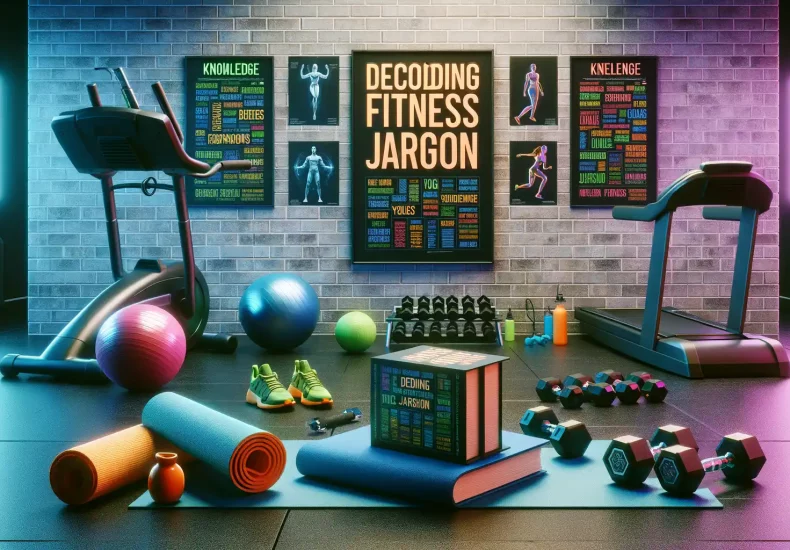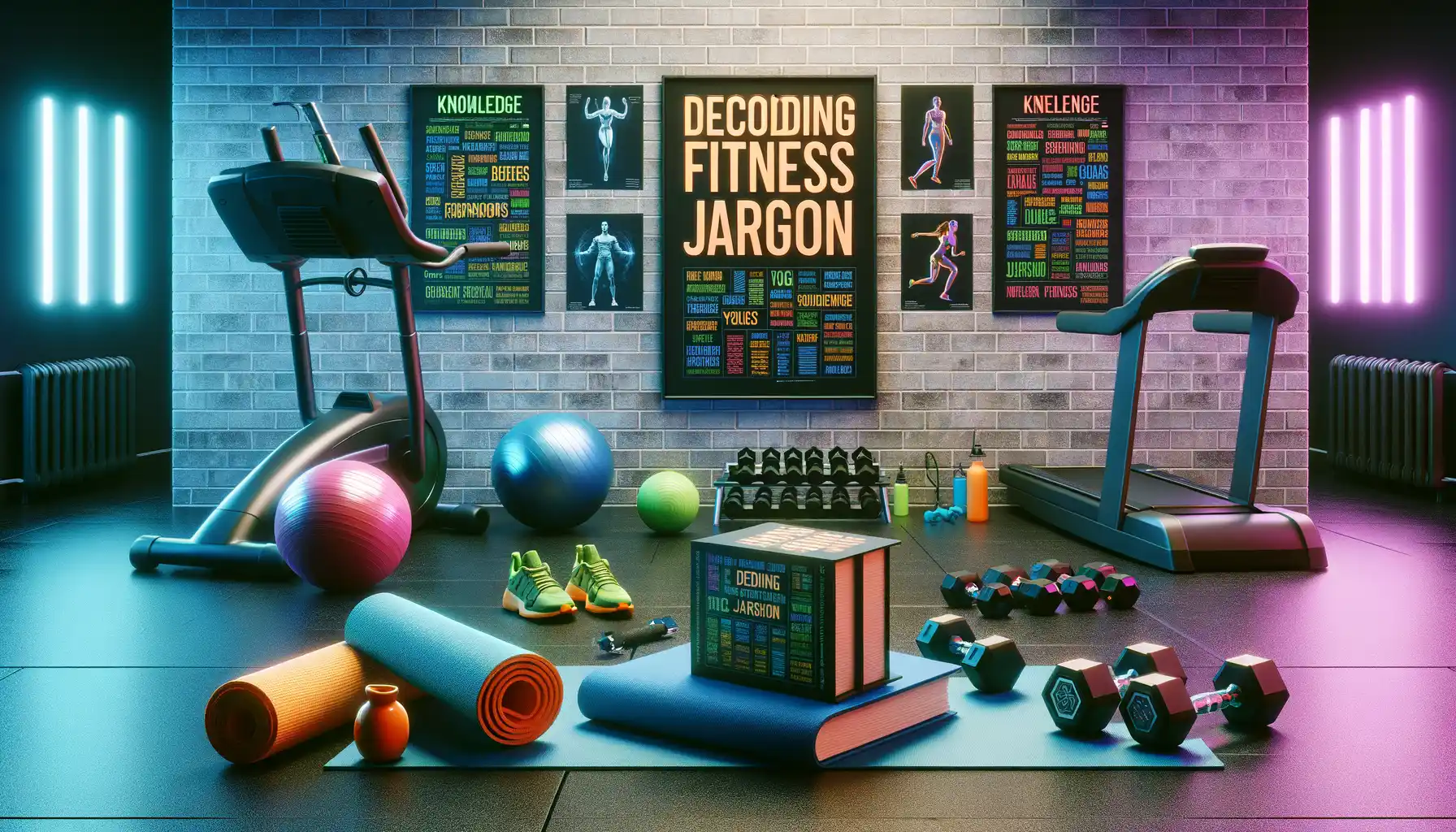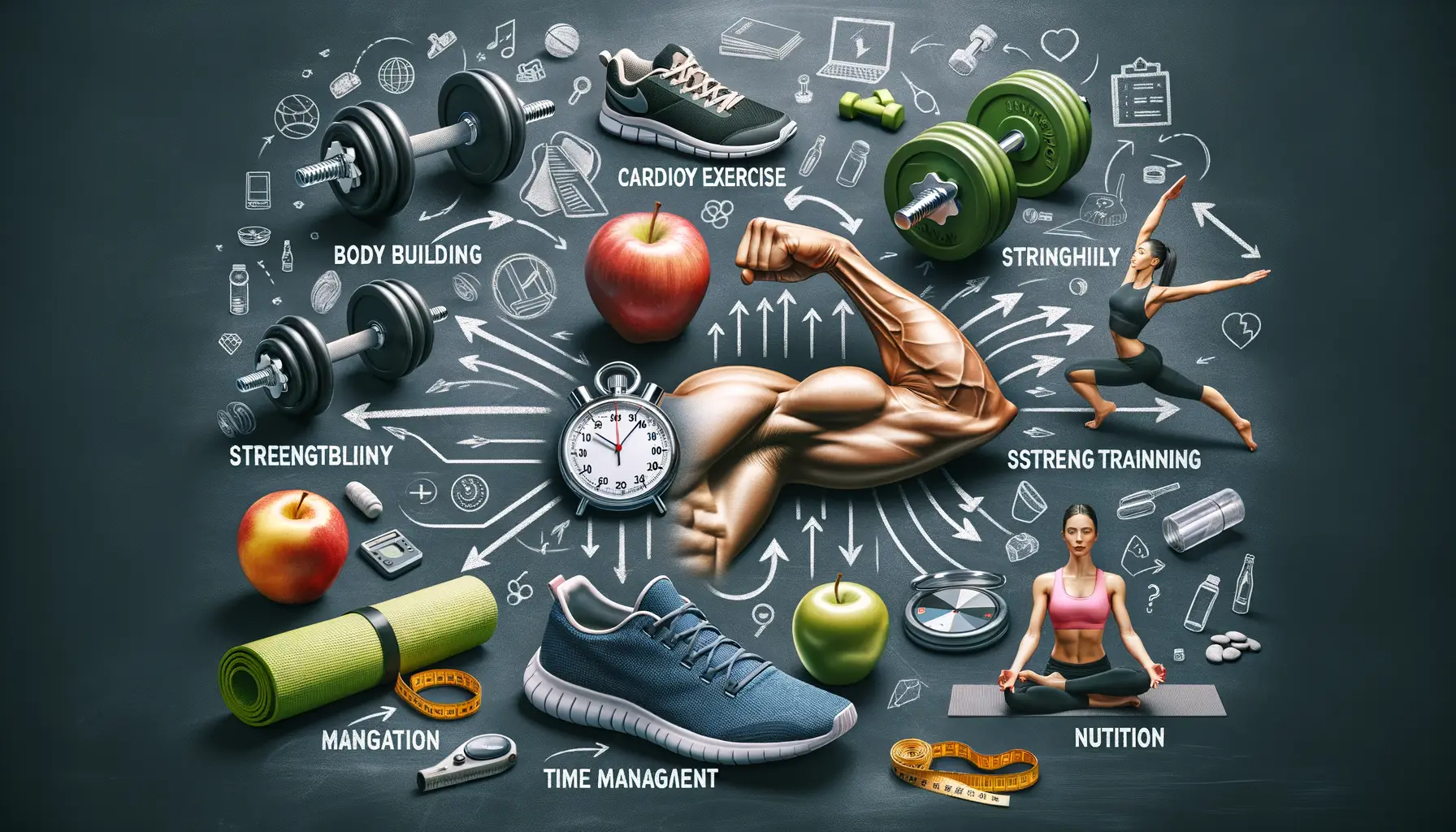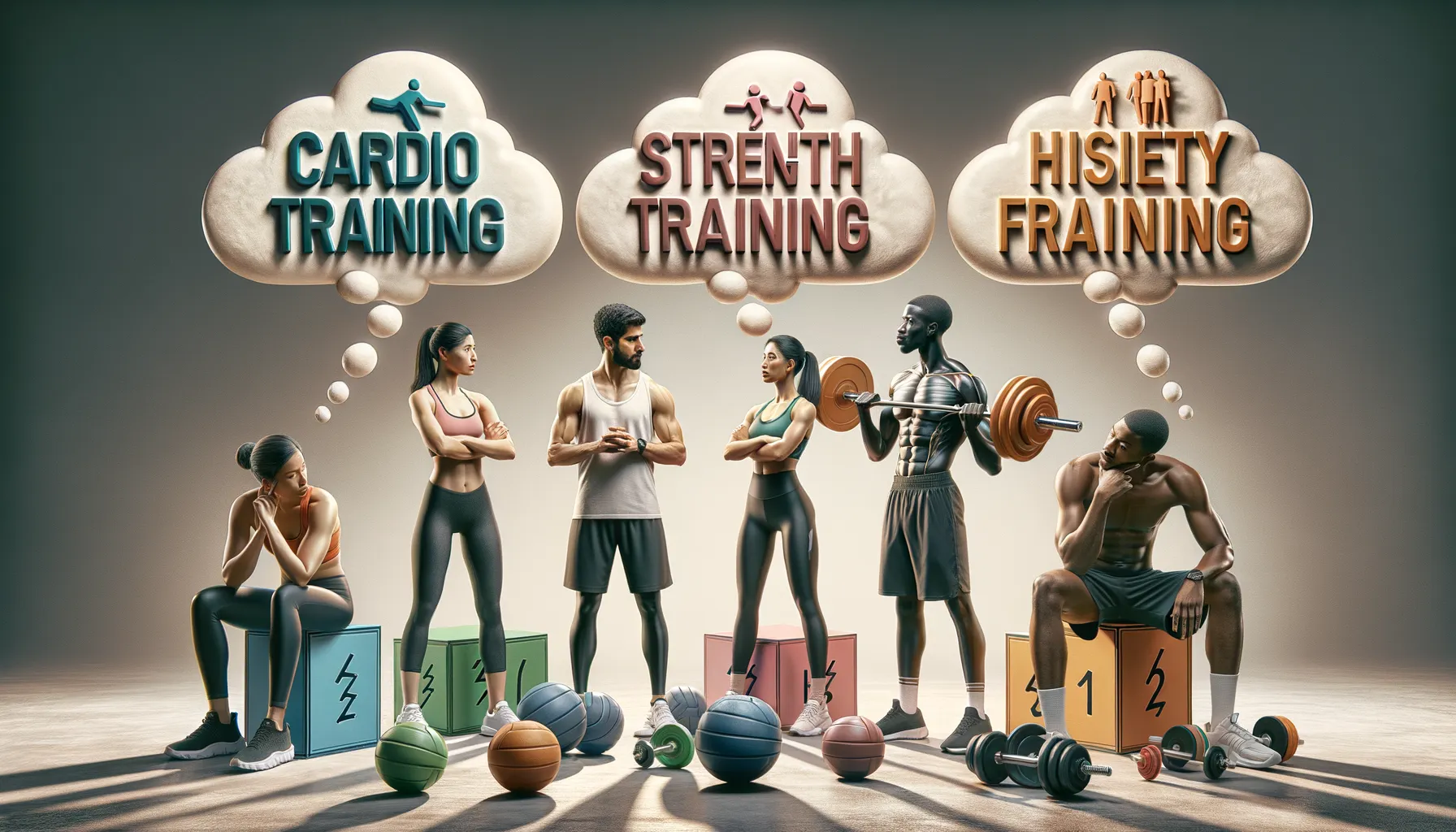
A Guide to Understanding Fitness Terminology
Common Terms in Fitness and Their Meanings
Breaking Down Fitness Buzzwords
Ever found yourself nodding along in a gym conversation, secretly wondering what on earth “HIIT” or “macro tracking” means? It’s like stumbling into a secret club where everyone else speaks the language fluently. But don’t worry—decoding fitness talk is simpler than it seems!
Let’s clear up some of the most common terms:
- HIIT: This stands for “High-Intensity Interval Training.” Picture this: you’re sprinting like you’re being chased, then catching your breath with a slow jog. Repeat that cycle, and voilà—you’re doing HIIT.
- Macro Tracking: No, it’s not tech-speak. It’s tracking the three vital nutrients your body needs: carbohydrates, proteins, and fats. Think of it as organizing your meals like a perfectly packed suitcase.
- DOMS: Delayed Onset Muscle Soreness. Remember that satisfying ache after leg day? That’s DOMS, proof your muscles are adapting and growing stronger.
Fitness language can be quirky, but it captures the essence of how we train, eat, and recover. Once you start sprinkling these terms into your own routine—or gym banter—you’ll feel like part of the inner circle.
The Importance of Understanding Fitness Jargon

Why Speaking the Language of Fitness Matters
Imagine walking into a gym for the first time. The smell of rubber mats is overwhelming, weights clank in the distance, and then you hear someone yell, “What’s your PR on deadlifts?” Wait… what? PR? Deadlift? It’s like stepping into another universe with its own secret code! But here’s the thing—if you don’t understand this lingo, it’s easy to feel lost, intimidated, or even completely out of place. And no one wants that.
Learning fitness jargon is more than just grasping terms; it’s about feeling connected to a community and unlocking the tools to crush your goals. Think of phrases like “HIIT”, “macros”, and “progressive overload”. Sure, they sound fancy, but they’re keys to decoding your workouts. Here’s why it matters:
- Clarity: Your trainer says, “Engage your core during planks.” If you don’t know what that means, are you doing it right?
- Confidence: Understanding terms makes you feel empowered, not awkward when asking questions or following plans.
- Consistency: Knowing concepts like “deload” or “active recovery” helps you progress without burning out.
Every term is a building block. Mastering them isn’t just ‘optional homework’—it’s the secret sauce behind fine-tuning your fitness journey.
Categories of Fitness Terminology

Diving into Strength and Conditioning Lingo
Fitness is like a language all its own—especially when it comes to strength and conditioning. Walk into any gym, and you’ll hear terms flying around: “Did you hit your PR?” or “What’s your RPE today?” Don’t let the jargon intimidate you; let’s decode it together!
Here are a few terms you’re bound to encounter:
- PR: Personal Record. That glorious moment when you hit your best-ever lift, run, or rep count.
- RPE: Rate of Perceived Exertion. Think of it as your internal effort gauge on a scale from 1 (easy) to 10 (all-out beast mode).
- Hypertrophy: The fancy term for making those muscles grow bigger and badder through strength training.
Strength and conditioning isn’t just gym talk; it’s a mindset. It’s about pushing yourself at the squat rack, perfecting that deadlift form, or chasing a heavier kettlebell swing. The beauty of these terms? They give you focus. Once you understand them, it’s like unlocking a secret code to challenge your limits.
Explore Dynamic Movement Vocabulary
On the flip side, fitness is also about how you move through space—and trust me, those words can get just as technical. Take words like plyometrics, which sounds like rocket science but simply means explosive moves like jumps or bounds. Or the ever-popular functional training, which refers to movements that mimic real-life activities, like twisting, bending, and lifting.
Let’s break down a few superstar terms in dynamic movement:
- ROM: Range of Motion. How far you can stretch, bend, or flex during an exercise.
- Stability: Think core strength—your ability to stay balanced as you move or hold a pose.
- Agility: Quickness on your feet. We’re talking drills like ladder runs and cone dodging.
Understanding these moves elevates more than your fitness game—it builds the foundation for better posture, faster recovery, and fewer injuries. Suddenly, a simple lunge isn’t just a lunge; it’s a tool for mastering life itself.
How to Use Fitness Terms Effectively in Training

Speak the Language of Strength
When you know how to wield fitness terms like a pro, your workouts transcend the ordinary. Imagine stepping into the gym and saying, “Today’s focus is on hitting my progressive overload sweet spot,” instead of, “I’ll just lift until I feel tired.” Suddenly, you’re not just working out; you’re strategizing.
Here’s the thing: understanding these terms isn’t about sounding fancy—it’s about precision. When your trainer says, “Engage your posterior chain during that deadlift,” they’re offering pure gold for your form. Trust me, it’s a game-changer when you know that means activating muscles like your glutes and hamstrings.
- Use terms like hypertrophy (muscle growth) to set clear goals in strength training.
- Track progress using measurable phrases such as maximal effort lifts or rest intervals.
Breathe Life into Your Training
Think of fitness vocabulary as your secret weapon. Let’s say you’re planning a high-intensity session. Instead of vaguely deciding to “push hard,” dial in with terms like HIIT or anaerobic threshold. These words give your routine structure—and let’s face it, structure makes or breaks results.
Even better, use this language during self-talk. Replace thoughts like “This is hard” with “I’m entering my lactate threshold zone.” It’s empowering. You’re no longer overwhelmed; you’re owning your journey.
Tips for Mastering Fitness Vocabulary

Break It Down: Bite-Sized Vocabulary for Everyday Wins
Mastering fitness lingo doesn’t have to feel like scaling Everest. Start by focusing on words you’ll actually use in your workouts. For example, if you’re diving into strength training, terms like progressive overload, drop sets, and reps should top your list. Are you into yoga? Words like vinyasa or savasana might be your go-to.
A great tip? Turn these terms into part of your daily life. Imagine explaining “progressive overload” to a friend over coffee or mentally linking “savasana” to that blissful moment when you flop onto your couch after a long workday. Fitness vocabulary doesn’t have to stay locked in the gym!
Turn Study Into Action
Memorizing definitions isn’t enough. You need to breathe life into these words! Try these quick strategies:
- Visualize: Associate each term with an action. For example, “plank” could conjure up the image of your core trembling but determined.
- Practice out loud: Use the words while doing the exercises. Say, “I’m crushing these supersets!” as you transition between exercises without rest.
- Label your goals: Want to improve your cardio endurance? Write it down and think about what it means as you hit the treadmill.
Every word you learn is another tool in your mental fitness toolbox—build that arsenal one step at a time!
You may also like
Latest Articles
- Modern Rarities: Premium-Appraised Quarters Released in 2020s

- Old Age Is a Joy Nowadays: Free Games That Will Help to Boost Your Memory

- The Historical Significance of Coins Depicting Sports

- Mental Training for the Self: How to Stay You Without Disappearing in Others

- Why Strength and Conditioning Are Vital for Athletes

Calendar
| M | T | W | T | F | S | S |
|---|---|---|---|---|---|---|
| 1 | 2 | |||||
| 3 | 4 | 5 | 6 | 7 | 8 | 9 |
| 10 | 11 | 12 | 13 | 14 | 15 | 16 |
| 17 | 18 | 19 | 20 | 21 | 22 | 23 |
| 24 | 25 | 26 | 27 | 28 | 29 | 30 |
